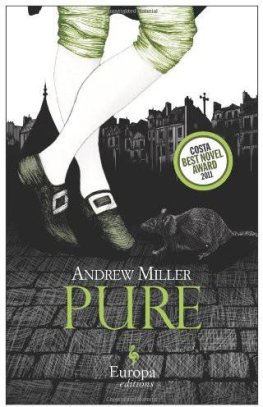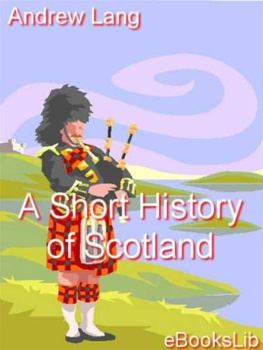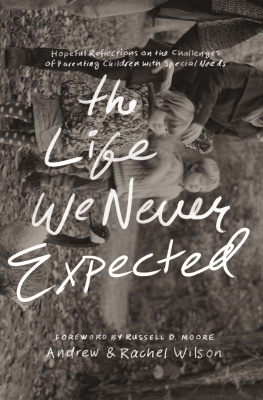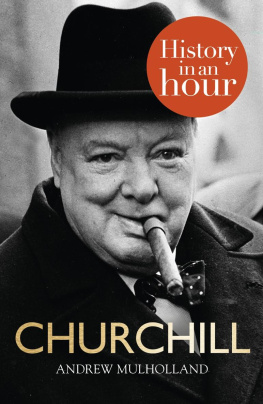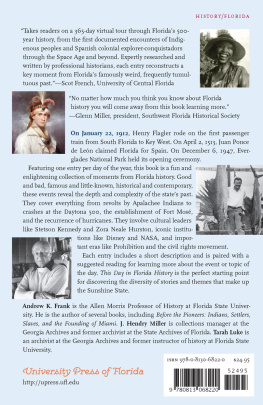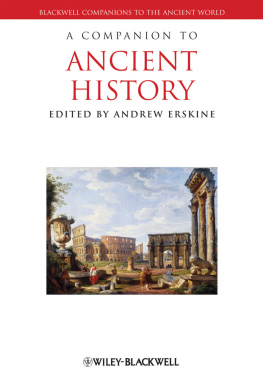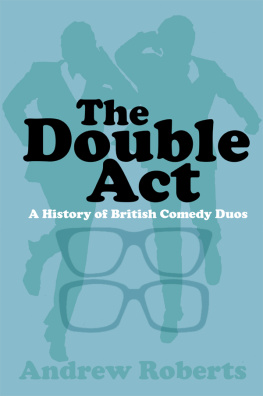Andrew Shryock - Deep History
Here you can read online Andrew Shryock - Deep History full text of the book (entire story) in english for free. Download pdf and epub, get meaning, cover and reviews about this ebook. year: 2011, publisher: University of California Press, genre: Romance novel. Description of the work, (preface) as well as reviews are available. Best literature library LitArk.com created for fans of good reading and offers a wide selection of genres:
Romance novel
Science fiction
Adventure
Detective
Science
History
Home and family
Prose
Art
Politics
Computer
Non-fiction
Religion
Business
Children
Humor
Choose a favorite category and find really read worthwhile books. Enjoy immersion in the world of imagination, feel the emotions of the characters or learn something new for yourself, make an fascinating discovery.

- Book:Deep History
- Author:
- Publisher:University of California Press
- Genre:
- Year:2011
- Rating:5 / 5
- Favourites:Add to favourites
- Your mark:
- 100
- 1
- 2
- 3
- 4
- 5
Deep History: summary, description and annotation
We offer to read an annotation, description, summary or preface (depends on what the author of the book "Deep History" wrote himself). If you haven't found the necessary information about the book — write in the comments, we will try to find it.
Deep History — read online for free the complete book (whole text) full work
Below is the text of the book, divided by pages. System saving the place of the last page read, allows you to conveniently read the book "Deep History" online for free, without having to search again every time where you left off. Put a bookmark, and you can go to the page where you finished reading at any time.
Font size:
Interval:
Bookmark:
Deep History
The publisher gratefully acknowledges the generous
support of the Ahmanson Foundation Humanities
Endowment Fund of the University of California Press
Foundation. The publisher also gratefully acknowledges
the support of the Harvard Historical Series.
The Architecture of Past and Present
Andrew Shryock
and Daniel Lord Smail
WITH
Timothy Earle
Gillian Feeley-Harnik
Felipe Fernndez-Armesto
Clive Gamble
April McMahon
John C. Mitani
Hendrik Poinar
Mary C. Stiner
Thomas R. Trautmann

University of California Press, one of the most distinguished university presses in the United States, enriches lives around the world by advancing scholarship in the humanities, social sciences, and natural sciences. Its activities are supported by the UC Press Foundation and by philanthropic contributions from individuals and institutions. For more information, visit www.ucpress.edu .
University of California Press
Berkeley and Los Angeles, California
University of California Press, Ltd.
London, England
2011 by The Regents of the University of California
Library of Congress Cataloging-in-Publication Data
Shryock, Andrew.
Deep history : the architecture of past and present / Andrew Shryock and Daniel Lord Smail ; with Timothy Earle... [et. al.].
p. cm.
Includes bibliographical references and index.
ISBN 978-0-520-27028-2 (cloth : alk. paper)
1. Human evolution. 2. Social evolution.
3. Anthropology, Prehistoric. 4. World history.
I. Smail, Daniel Lord. II. Earle, Timothy K. III. Title.
GN281.S457 2011
599.938dc22 2011017773
Manufactured in the United States of America
20 19 18 17 16 15 14 13 12 11
10 9 8 7 6 5 4 3 2 1
In keeping with a commitment to support environmentally responsible and sustainable printing practices, UC Press has printed this book on Rolland Enviro100, a 100% post-consumer fiber paper that is FSC certified, deinked, processed chlorine-free, and manufactured with renewable biogas energy. It is acid-free and EcoLogo certified.
Andrew Shryock and Daniel Lord Smail
Andrew Shryock, Thomas R. Trautmann, and Clive Gamble
Daniel Lord Smail and Andrew Shryock
Mary C. Stiner and Gillian Feeley-Harnik
April McMahon, Thomas R. Trautmann, and Andrew Shryock
Felipe Fernndez-Armesto with Daniel Lord Smail
Thomas R. Trautmann, Gillian Feeley-Harnik, and John C. Mitani
Timothy Earle and Clive Gamble with Hendrik Poinar
Daniel Lord Smail, Mary C. Stiner, and Timothy Earle
Mary C. Stiner, Timothy Earle, Daniel Lord Smail, and Andrew Shryock
All arguments about the past are shaped by rhetorical and narrative devices. It is not just an assessment of the facts that helps us decide whether a historical account is convincing: facts emerge as such, and acquire their power as evidence, within narrative structures. The story of an empires rise or a nations collapse may be filled with dates and textual sources, which can be right or wrong, reliable or dubious; but the storys integrity as history also depends on a deeper architecture of likenesses. Empires and nations, though they consist of millions of individuals who do not know each other, are often treated as if they were physical bodies. They are born, mature, and die in history books. They have (or appear to have) character traits; they make decisions, acquire friends and enemies, form and dissolve unions. They are compared, in countless ways, to persons, families, and bodies. At a certain level we know these likenesses are metaphorical, but doing without them is difficult. When the metaphors seep into everyday usage among historical actors, we can even say that they shape the evidence and events that historians choose to write about. Metaphors determine what goes into a historical argument, what is left out, and how new forms of historical argumentation can be developed. What matters to good history writing is to develop a knowing relationship with the narrative motifs and metaphors that we employ.
This is a book about the deep history of humankind, a domain of inquiry that extends millions of years into the past. Although it might seem the perfect subject matter for historians, this vast time-space was left out of most historical writing almost as soon as it was discovered. Humans have always been interested in their origins, but the deep past, as typically understood by modern historians, is never deeper than antiquity and is sometimes positioned in an even more recent era. Awareness of a time before antiquity became acute only in the nineteenth century, as the Darwinian revolution displaced the widely shared belief that the world was only 6,000 years old. The new age that suddenly opened up before Eden, dividing the human past into long and short chronologies, soon became the object of systematic study. Yet deep time seemed impervious to the methods of conventional historical writing, a state of affairs captured in the word coined to describe this newly remote past: prehistory.
As this volume demonstrates, the assumptions that initially conspired to mark off prehistory as a time before history are still very much with us. At stake is a methodology based on written evidence, along with a commitment to a powerful set of narrative motifs, most of them grounded in notions of progress and human mastery over nature. Together these commitments have made the deep past an unsettling place for academic historians. Thanks to the industrious work habits of archaeologists and paleoanthropologists, prehistory today is carefully mapped, meticulously dated, and creatively analyzed. In recent decades, discoveries about the evolution of humans and related hominid species have been accumulating thick and fast. But for all that, the deep human past remains curiously off limits to many anthropologists and historians, even to those interested in the big questions of what it means to be human. In fact, the chronological domain of the research explicitly described as historical has narrowed dramatically in scope over the past century, even as our knowledge of human prehistory has expanded. Most historical research is now concentrated in the centuries that followed the global expansion of the European powers, in times vaguely described as modern, in societies described as colonial and postcolonial.
This volume grows out of our discomfort with this trend and our desire not only to explain it but also to create alternatives to it. We do not think that the systematic neglect of deep history among historians and anthropologiststwo fields that make the human past their businessis a product of ignorance or disdain. Nor is it a simple byproduct of specialization. It arises instead from the architecture of historical arguments, from the narrative motifs and analogies preferred by the writers of history. A century ago, the simplistic notions of progress and the misapplications of Darwinian evolutionary theory that dominated history and anthropology conspired to make all premodern civilizations inconsequential except, perhaps, as living evidence of Europes primitive past and a way of understanding its rise to global superiority. All that has changed. Historians and anthropologists today routinely invoke a new set of patterns, such as diaspora, subalternity, hegemony, resistance, commodification, and agency, to characterize the intricate feedback patterns that accompanied the emergence of the modern world system. The triumph of the global perspective shows how, through concentrated effort, the very patterns of historical writing can be transformed. In this transformation, the formerly irrelevant is made intensely relevant not through a new set of facts but through a new set of intellectual devices for describing the arc of change. Yet the very success of the global paradigm has revealed the continuing absence of the patterns and forms that might allow us to recuperate the deep human past.
Next pageFont size:
Interval:
Bookmark:
Similar books «Deep History»
Look at similar books to Deep History. We have selected literature similar in name and meaning in the hope of providing readers with more options to find new, interesting, not yet read works.
Discussion, reviews of the book Deep History and just readers' own opinions. Leave your comments, write what you think about the work, its meaning or the main characters. Specify what exactly you liked and what you didn't like, and why you think so.


